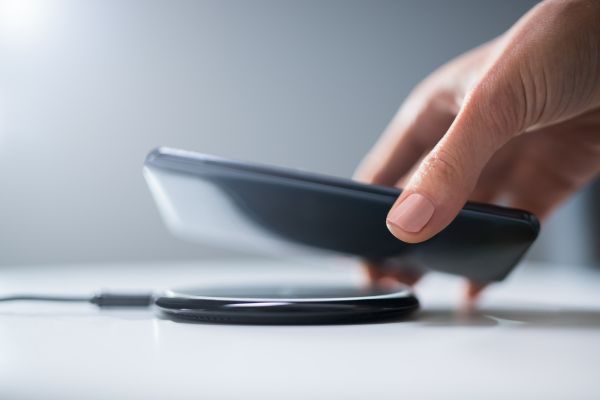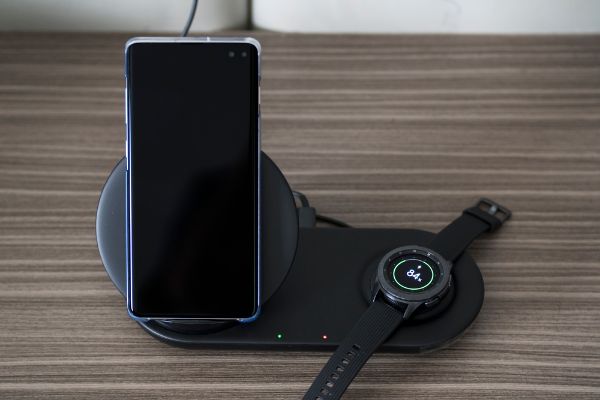Disclaimer: This post may contain affiliate links, meaning we get a small commission if you make a purchase through our links, at no cost to you. For more information, please visit our Disclaimer Page.
Portable devices increase the ways in which we all have access to technology at any given time. Thanks to modern smartphones or laptops, we can make calls, have video conferences, or engage in entertainment from multiple sources. We can do all of this without the need for a dedicated landline, conference center, or complicated televisual setups with lots of cords.
However, to get the most out of these kinds of things, we need strong batteries that can last a long time, too. The technology that powers batteries is one that developers have refined over the years, and there are optimization settings you can choose on many devices in order to get even more time between charging sessions.
With all that said, any battery powering your devices today needs to top itself up at some point. There are a few ways you might do this, but they can all go into the two main categories of either wired or wireless charging. Many people are already familiar and comfortable with wired charging.
This allows them to plug their phones and other devices int an adapter unit that takes power from a typical wall socket and transfers it to the battery at a voltage that the latter can handle. However, some people wonder about wireless charging too, including its overall viability. We will get into this topic in today’s article. As we do, we’ll come up with some lists of both positives and negatives that we might apply to the charging standard broadly.
Doing so can segue our topic into why this kind of charging doesn’t seem very popular, and we will wrap up by talking about its overall power consumption.
Table of Contents
What Is the Point of a Wireless Charger?
As the name suggests, a wireless charger allows you to provide energy to your phone’s battery without the need for any cords.
Similarly, you won’t need to mess with the ports on your phone or the plugs at the ends of the cord. While seemingly simple enough, it may be a bit of a hassle for those who are tired or who have dexterity issues to charge their phones properly this way.
All in all, much of the good that we could probably say about wireless charging will come down to a matter of convenience. Late at night, or in areas other than the home, many people might find it more convenient to place their phone on a wireless pad and go on about their business as it starts charging right away.
Furthermore, many people charge their phones at night, and having a pad nearby might make it easier to grab the phone from the stand in order to check the notifications they might receive quite late.
Having a wireless charger available can increase the flexibility of your phone’s battery life. This could be true in terms of how you might use it when it is charging, and in what situations you might choose to charge it up at all. That said, it is important to remember that wireless charging is relatively new and still in the early stages of its development.
We will get to some of the major advantages or drawbacks of it later, but we must judge the efficacy of the charging protocol based on how new it is. As developers work to refine wireless charging over the years, we may see the positives increase and the negatives decrease.
In short, the point of wireless charging comes down to a bit more than just convenience. It is also conceptual proof that modern smart devices don’t need physical connections to cables in order to run efficiently. Cables are well and good for stable, fast connections.
However, many people want to move away from technology that tethers them to one place. Wireless charging could be changing this very kind of landscape, but we’ll have to see what other developments for it we might discover in the future.
What Are the Pros & Cons of Wireless Charging?
We’ve touched on some of the advantages of wireless charging briefly already, but it makes sense to go into more detail about this category here. As a way to put things into perspective for our readers, we will also talk about some of the potential downsides to using wireless chargers.
Pros
Here is a short list of some of the most common pros from which wireless charging seems to benefit:
1. Wireless charging represents a version of ease-of-use. Although we touched on convenience already, the attraction to wireless charging standards goes beyond that. With a distinct lack of cords to worry about, you keep the charging port of your phone newer and in good condition for when you do need it to charge things by cord.
Putting any kind of stress on the cord while it is charging the device can also cause some damage to the port. If this sort of thing becomes too severe, it may be difficult for the phone to recognize when a wired charger is ready to go.
2. Similarly, not having to deal with the tiny details of cord ends and ports can be beneficial to any people who might have challenges to their fine motor skills. Putting a cord in a port when you have such difficulties can scratch the finish on your phone, but it can also damage the cord ending, port, or both in ways that might make operating the device harder.
3. Thanks to wireless charging, the chances of damage to the phone because of any kind of electrical fault are much rarer than if you have the device plugged in.
4. Although more devices are going for universal cords, the charging standards for wireless have already started that way. This can make it much more convenient for you to charge different devices wirelessly.
Cons
There are certainly advantages to wireless charging, but here are a few things that might not be so appealing to some people:
1. The charging pad needs its own source of energy, meaning some people may not consider it to be a truly wireless standard. It still frees your phone from cords for the most part, but the technology hasn’t advanced enough to need zero cords whatsoever.
2. The phone only charges when it is on the pad. The device has a coil that needs to make contact with a similar coil inside the pad. Once these two meet, the charging process can begin.
However, it stops when you remove the phone from the pad. This aspect of wireless charging may be inconvenient for people who would like to use their phones and charge them at the same time.
3. It is possible that the phone may not charge unless you line it up precisely with the pad in a particular way.
Why Is Wireless Charging Not Popular?
The answers to this question could vary quite a bit based on each individual’s choices or preferences. However, we can try to offer some general insights that might tell us why wireless charging doesn’t seem to be extremely popular, particularly given the numerous advantages we’ve discussed thus far.
In some ways, wireless charging seems to be quite an efficient way to get the job done, but in others, it seems to lack some of the usefulness of its wired cousin. It is possible that all the reasons that might contribute to its lack of popularity could boil down to relative inefficiency in terms of what you get out of it.
For example, the way that heat transfers between the two units as your phone is charging might make it very hot. While wireless charging has made some strides over the years, it is still possible that it could make some heat transfer problems that force the internal parts of the phone to take on too much excess.
If this happens, the delicate circuitry inside could take some damage too. Furthermore, overheating tends to shorten battery life, and many modern smartphones do not allow users to replace the battery alone.
Additionally, wireless charging pads create another expense that could be high for some users. Most phones come with their own chargers by default. Even if you found a phone that did not, it is both simple and cheap to get an adapter that is compatible with the model you want.
Some of these chargers can even work on several devices. While the wireless charging pad should be a more universal accessory, its high price point relative to wired chargers might be a deterrent for some.
Does a Wireless Charger Use Power When Not in Use?
A wireless charger may use a little power when it isn’t charging a device actively. However, it only consumes enough power to send out a signal to search for a device attached to it. If it does not get an affirmative signal back, it will not put out any energy in order to charge a coil.
Like any technology that runs once you plug it in, the wireless pad needs a tiny bit of energy in order to stay on and alert for new devices. However, the power it needs in order to stay on and looking for devices like this should be negligible.
Conclusion
Wireless charging is still new, but it represents what some people hope is an increased level of convenience across charging standards. The pads make things simple enough to set a device down and go on about your business, and there are no cords to deal with or wear and tear on the ports. This charging standard can be expensive, we should see improvements in pricing and energy use as developers continue to refine how the process works.


